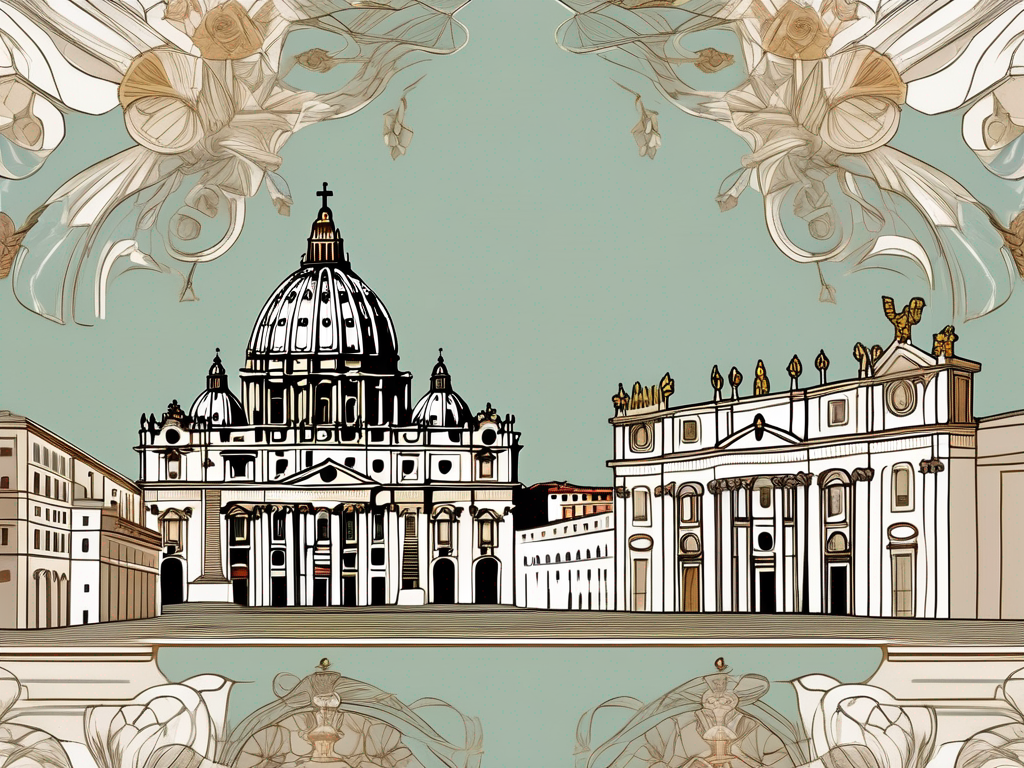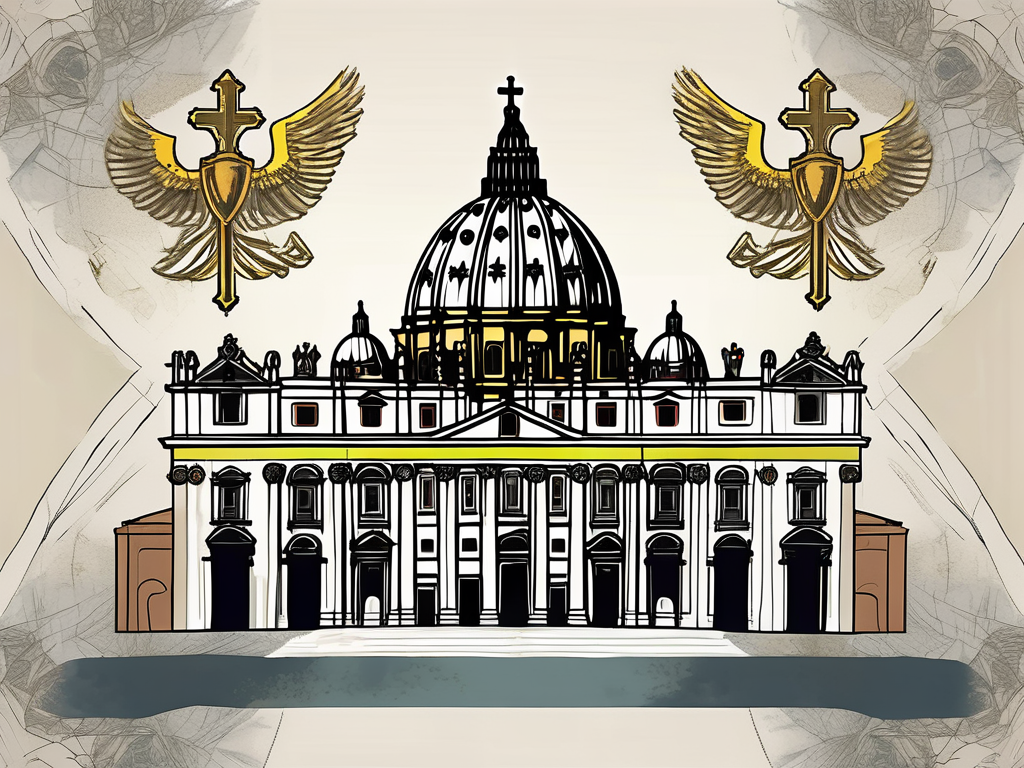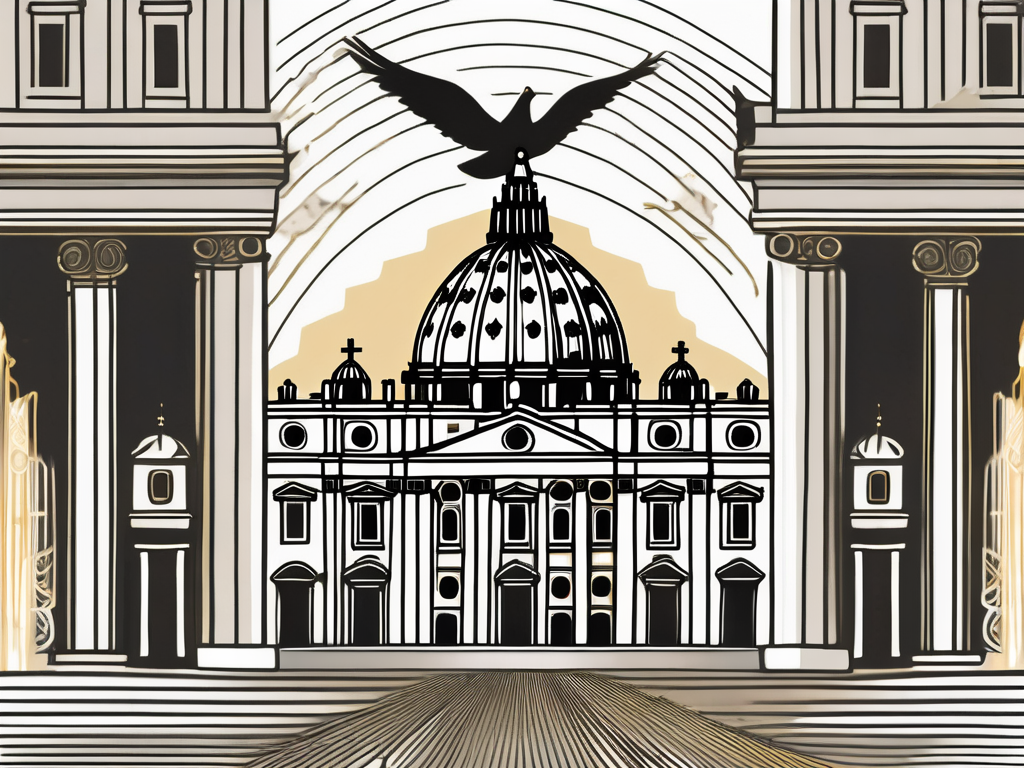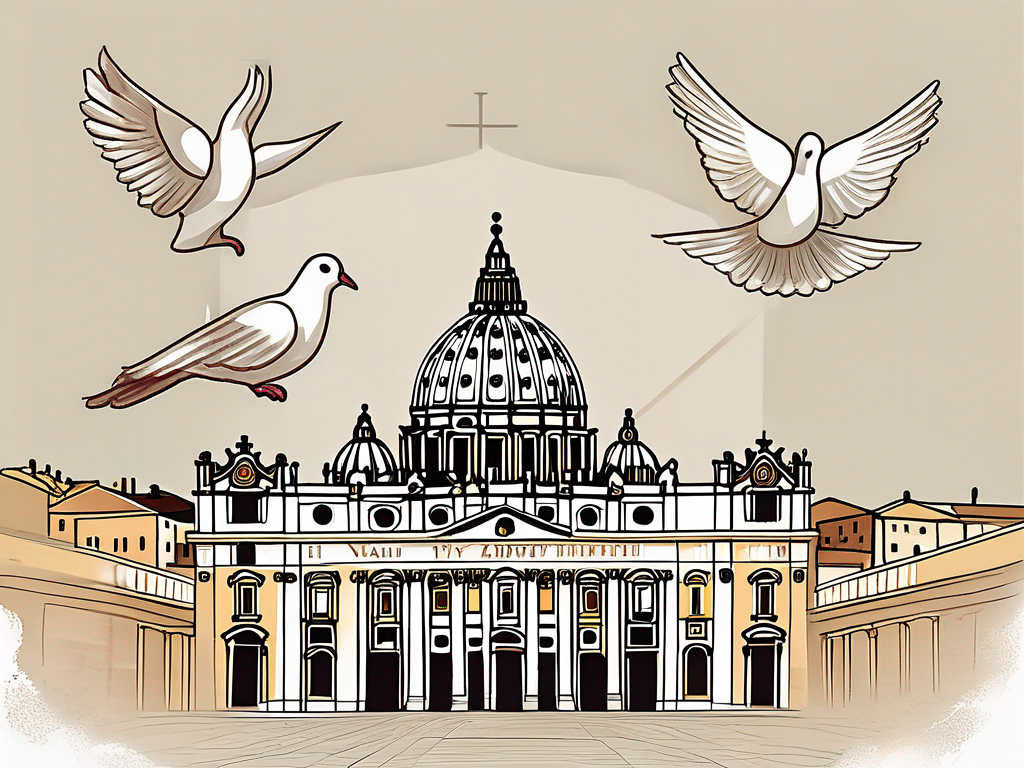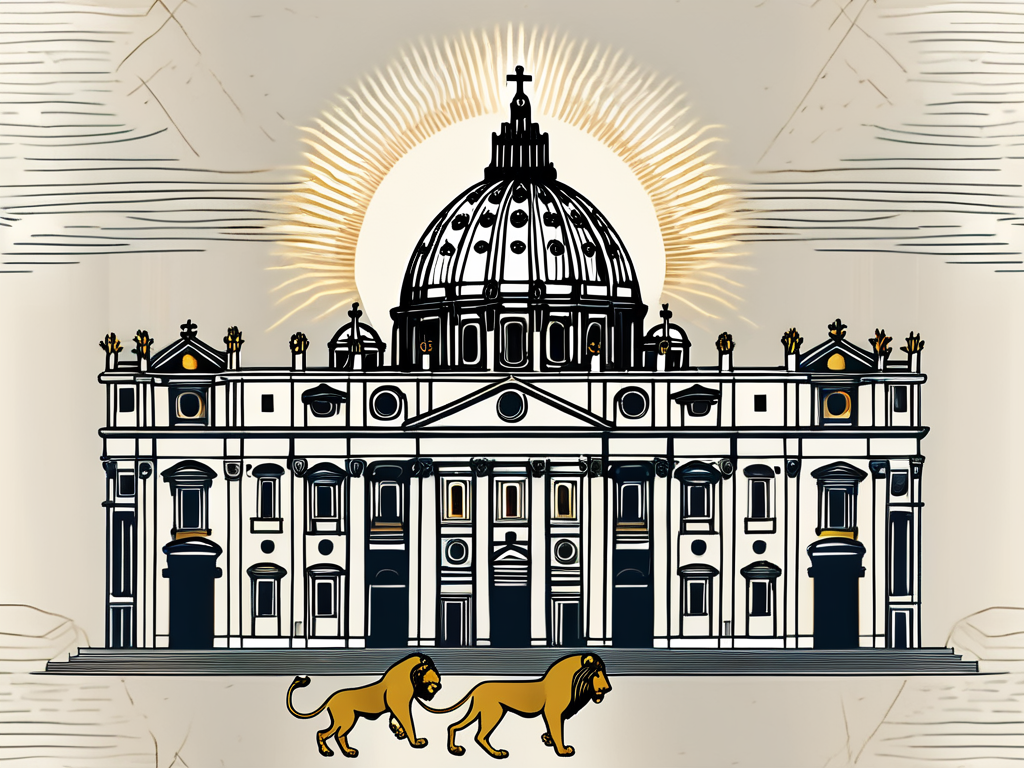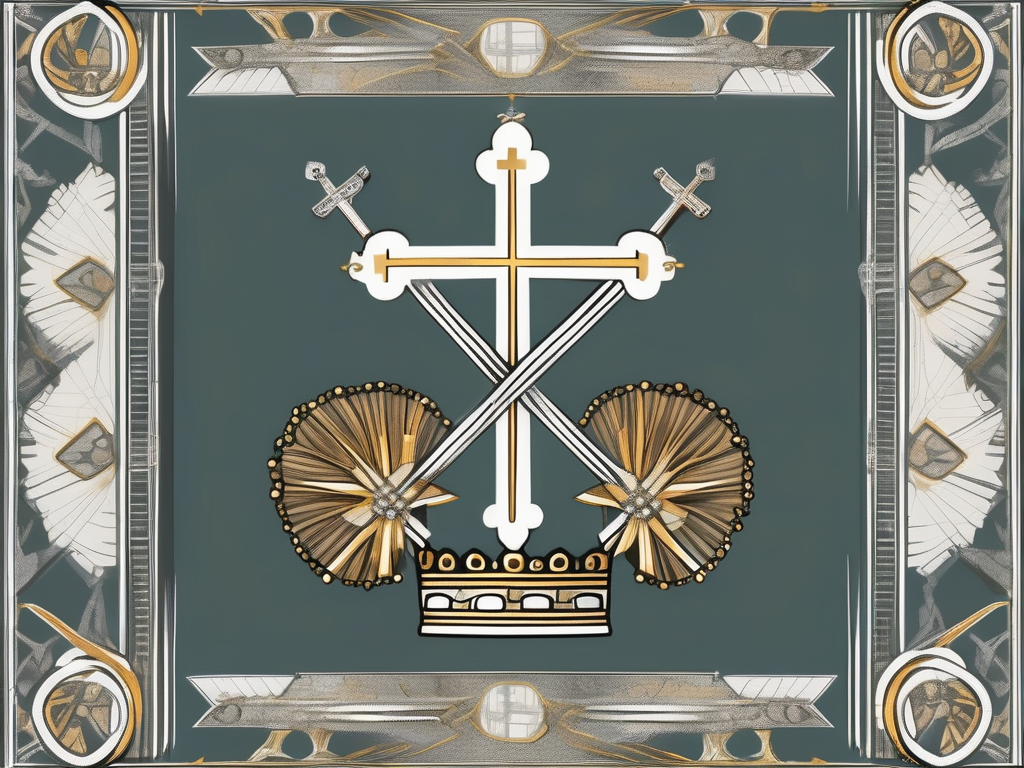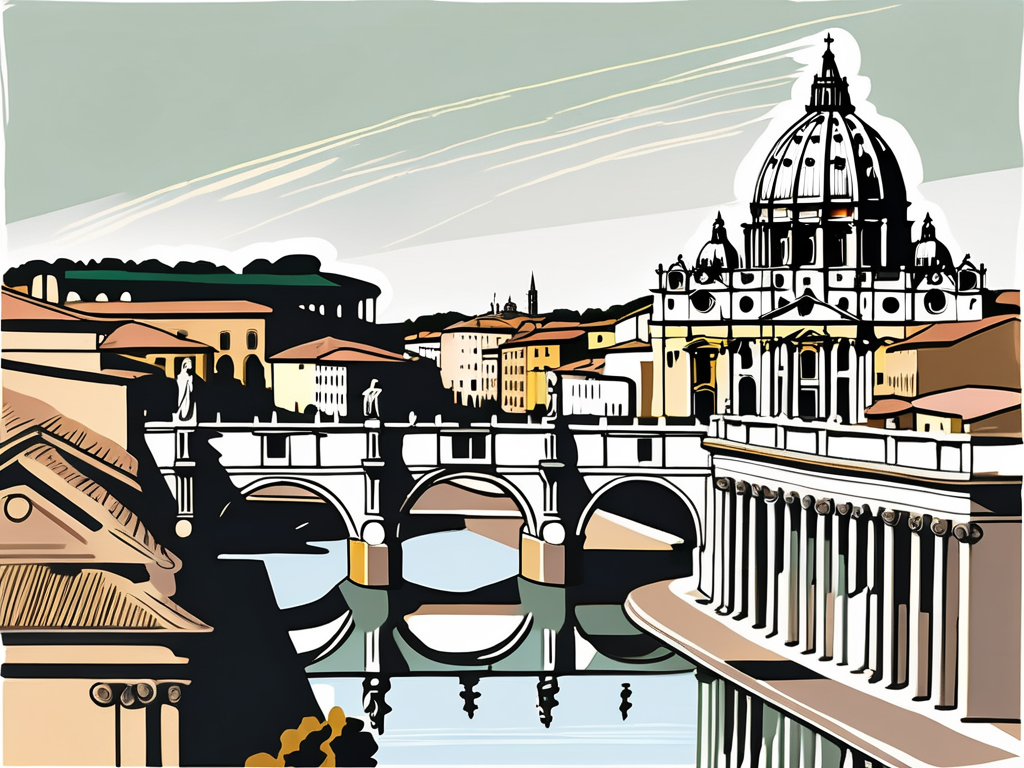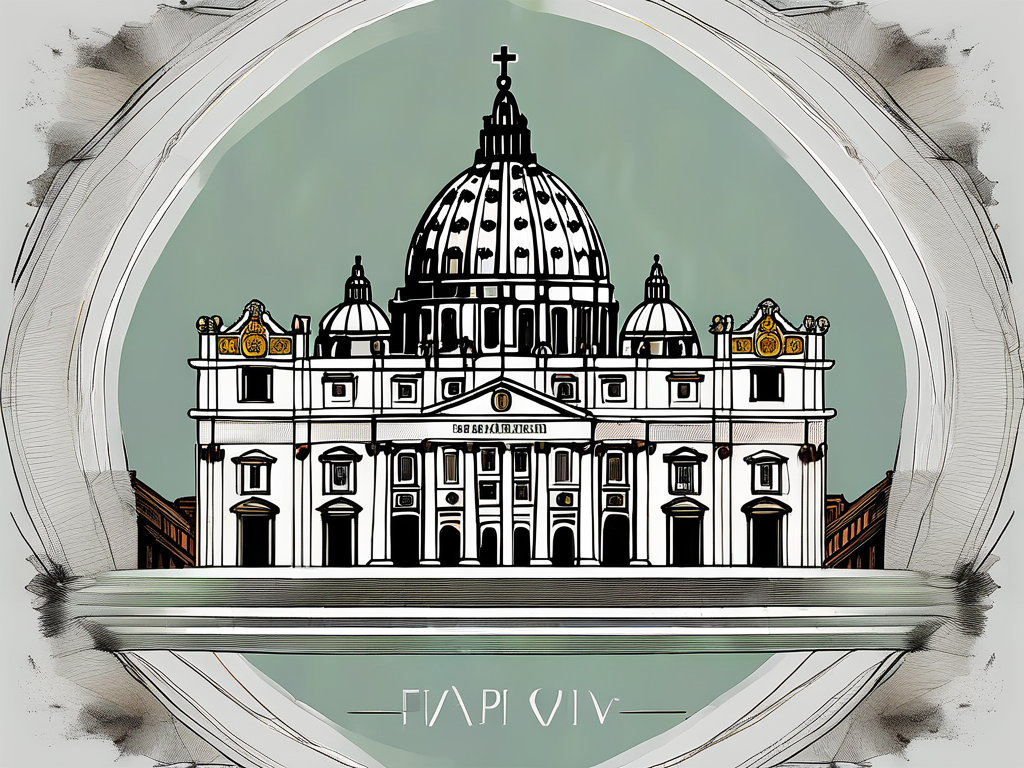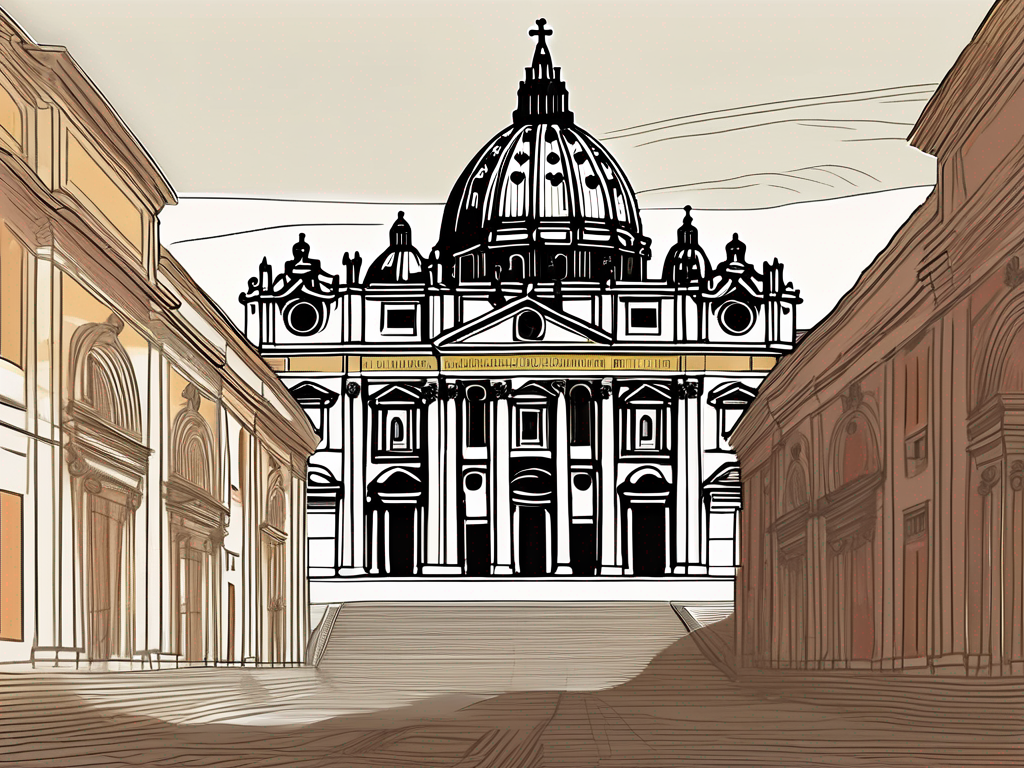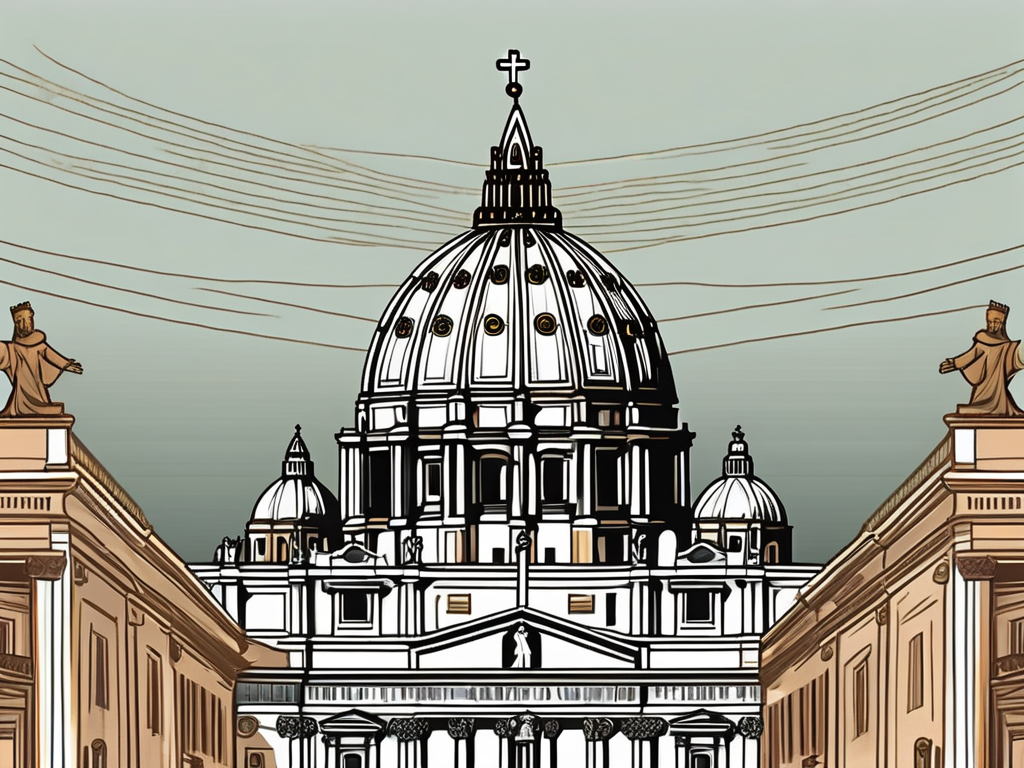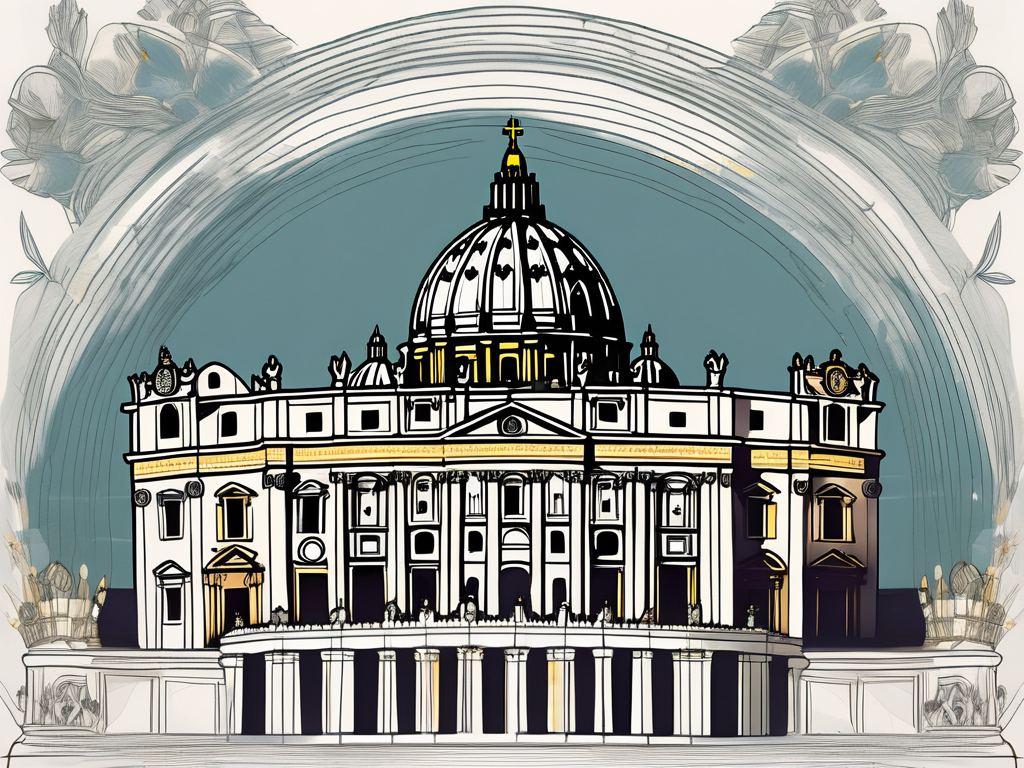In the history of the Catholic Church, few popes have left as profound a mark as Pope Leo X. Born as Giovanni de Medici, his life journey took him from humble beginnings to the highest seat of power in the Vatican. From his early life and education to his controversial papacy, Leo X’s legacy reverberates to this day.
Early Life and Education of Giovanni de Medici
Before he became Pope Leo X, Giovanni de Medici had a fascinating upbringing. His birth and family background played a significant role in shaping his future. Giovanni was born on December 11, 1475, in Florence, Italy, into the renowned and influential Medici family.
The Medici family was known for their deep involvement in banking, commerce, and politics. Giovanni’s father, Lorenzo de Medici, was a skilled politician and ruler of Florence. Growing up in such a prominent family exposed Giovanni to the inner workings of power from an early age.
Birth and Family Background
Giovanni de Medici’s birth into the Medici family was a significant event. He had the privilege of being born into a family that boasted immense wealth and influence. This birthright created enormous expectations and opportunities for Giovanni as he navigated his way through life. It also meant that his actions would be closely scrutinized and that he would inherit a vast network of connections.
The Medici family’s wealth was built on their successful banking empire, which spanned across Europe. Their financial prowess allowed them to support artists, scholars, and scientists, contributing to the flourishing of the Renaissance. This cultural environment undoubtedly had a profound impact on Giovanni’s upbringing, exposing him to the finest works of art and intellectual discourse.
Furthermore, the Medici family’s political influence extended beyond Florence. They played a crucial role in shaping the political landscape of Italy, often acting as patrons and supporters of various rulers and city-states. Giovanni’s father, Lorenzo de Medici, was known for his diplomatic skills and ability to maintain alliances, ensuring the Medici family’s continued prominence.
Education and Early Influences
Giovanni’s education was carefully curated to prepare him for a life of power and influence. He received an extensive education in the humanities, arts, and political science, acquiring knowledge that would prove invaluable in his future role as Pope Leo X.
Under the guidance of renowned tutors, Giovanni studied classical literature, philosophy, and rhetoric. He developed a deep appreciation for the works of ancient Greek and Roman scholars, which would later influence his intellectual pursuits as pope.
Furthermore, growing up in Florence, Giovanni was exposed to the intellectual and cultural blossoming of the Renaissance. The works of artists such as Leonardo da Vinci and Michelangelo left an indelible mark on his young mind, shaping his passion and appreciation for the arts. He witnessed firsthand the groundbreaking artistic achievements that defined the era, inspiring him to support and patronize artists throughout his life.
Giovanni’s education also included training in the intricacies of diplomacy and statecraft. He learned the art of negotiation, the importance of maintaining alliances, and the complexities of international relations. These skills would prove invaluable as he ascended to the papacy and faced the challenges of leading the Catholic Church during a time of great political and religious upheaval.
In conclusion, Giovanni de Medici’s early life and education were marked by privilege, influence, and exposure to the finest cultural and intellectual developments of the Renaissance. His birth into the Medici family and the carefully curated education he received set the stage for his future as Pope Leo X, where he would navigate the complexities of power, politics, and the arts with great finesse.
Ascension to Papacy as Leo X
On March 11, 1513, Giovanni de Medici ascended to the papacy, taking the name Pope Leo X. His election and coronation marked the beginning of a tumultuous and controversial reign.
Leo X’s election as pope was not without its share of political maneuverings and machinations. Despite his young age and relative inexperience, his family’s influence, prominent allies, and carefully cultivated relationships within the College of Cardinals secured him the pontificate.
Upon his coronation, Leo X faced numerous challenges. The Catholic Church was entering a period of immense turmoil, with the Protestant Reformation gaining momentum. As such, the policies and decisions he made in the early years of his papacy would shape the course of history.
Leo X aimed to defend and uphold the authority of the Catholic Church during a time of religious upheaval. He initiated a series of reforms within the church, seeking to address issues of corruption and promote spiritual renewal. However, some of his policies met with resistance and criticism from within the church hierarchy.
One of the significant reforms introduced by Leo X was the establishment of the Sistine Choir, a group of highly skilled singers who performed sacred music during papal ceremonies. This initiative not only enhanced the grandeur of religious rituals but also showcased the artistic and cultural richness of the Catholic Church.
Despite these challenges, Leo X’s papacy was not solely focused on religious affairs. He was an astute politician, skillfully navigating the complex landscape of European politics. His diplomacy and alliances proved instrumental in maintaining the church’s influence and power.
Leo X fostered close relationships with various European monarchs, including King Francis I of France and King Henry VIII of England. These alliances allowed him to exert influence on political matters and secure support for the Catholic Church amidst the growing Protestant movement.
Furthermore, Leo X’s patronage of the arts and sciences played a significant role in shaping the cultural landscape of his time. He commissioned renowned artists such as Raphael and Michelangelo to create magnificent works of art, including the iconic frescoes in the Vatican’s Sistine Chapel.
Leo X’s reign also witnessed the flourishing of humanist scholarship, with the pope himself being a patron of scholars and intellectuals. He supported the revival of classical learning and encouraged the study of ancient texts, contributing to the intellectual and cultural renaissance of the era.
However, Leo X’s lavish lifestyle and extravagant spending drew criticism from some quarters. His patronage of the arts and his desire to beautify Rome led to significant financial burdens on the church, exacerbating existing financial difficulties.
Overall, Pope Leo X’s papacy was a complex and multifaceted period in the history of the Catholic Church. It was marked by efforts to reform and strengthen the church amidst the challenges posed by the Protestant Reformation. His political acumen, cultural patronage, and diplomatic skills left a lasting impact on the church and the world at large.
Leo X and the Protestant Reformation
One of the defining chapters of Leo X’s papacy was his interaction with the Protestant Reformation, led by Martin Luther. Their relationship and Leo X’s response to the Reformation movement would have far-reaching implications for the Catholic Church and the world.
Relationship with Martin Luther
Leo X’s relationship with Martin Luther began amicably. Initially, Leo X saw Luther as a promising theologian and even awarded him a prestigious papal honor. However, as Luther’s teachings grew increasingly critical of the church’s practices, their relationship deteriorated.
As Luther’s ideas gained traction among the masses and threatened the Catholic Church’s authority, Leo X found himself torn between compromise and suppression. Ultimately, this conflict would become a defining moment of his papacy.
Response to the Reformation Movement
Leo X’s response to the Reformation movement was multifaceted. On one hand, he recognized the need for reform within the Catholic Church and initiated dialogues and discussions. On the other hand, he also condemned and excommunicated individuals associated with the Protestant movement.
These measures, while intended to preserve the unity of the Catholic Church, inadvertently fueled the fires of division. The actions and reactions of both Luther and Leo X set the stage for centuries of religious upheaval and conflict.
Cultural and Artistic Contributions
Apart from his political and religious endeavors, Pope Leo X is also remembered for his significant contributions to the cultural and artistic landscape of the Renaissance.
Patronage of the Arts
Leo X was a great patron of the arts, fostering an environment that encouraged and celebrated creativity. He supported renowned artists such as Raphael, whose works adorn the Vatican’s halls to this day. This patronage not only enriched the cultural legacy of the Catholic Church but also helped solidify the church’s power and influence.
Influence on Renaissance Culture
Leo X’s papacy coincided with the zenith of the Renaissance, and his support for the arts played a pivotal role in shaping the era’s distinct character. Under his patronage, the vibrant cultural scene of Italy flourished, with advancements in literature, music, and architecture leaving an indelible mark on the world.
Controversies and Criticisms
Despite his many accomplishments, Pope Leo X was not devoid of controversy. His papacy was marred by allegations of financial mismanagement and political maneuverings.
Financial Mismanagement Allegations
Critics accused Leo X of excessive spending and lavish lifestyle choices, which led to financial strain on the church. The sale of indulgences, a practice common during his time, drew intense criticism and fueled the dissatisfaction that ultimately sparked the Protestant Reformation.
While the veracity of these allegations is debatable, they tarnished Leo X’s reputation and contributed to the growing discontent within the Catholic Church.
Political Maneuverings and Consequences
Leo X’s political maneuverings, though advantageous in preserving the church’s strength, also had unintended consequences. His alliances and involvement in European politics were sometimes viewed as prioritizing secular power over spiritual welfare.
The political complexities of the time created tensions and divisions within the Catholic Church, fueling the flames of reformation and driving a wedge between different factions.
In conclusion, the life and legacy of Pope Leo X were marked by brilliance and controversy, with his papacy intersecting with tumultuous times in history. From his early life and education to his ascension as Pope Leo X, his impact on the Catholic Church and Renaissance culture cannot be overstated. While criticized for his handling of the Protestant Reformation and alleged financial mismanagement, his contributions as a patron of the arts resonate to this day. Pope Leo X, with all his complexities, left an indelible mark on history that continues to shape our understanding of the Catholic Church and the Renaissance era.
